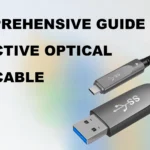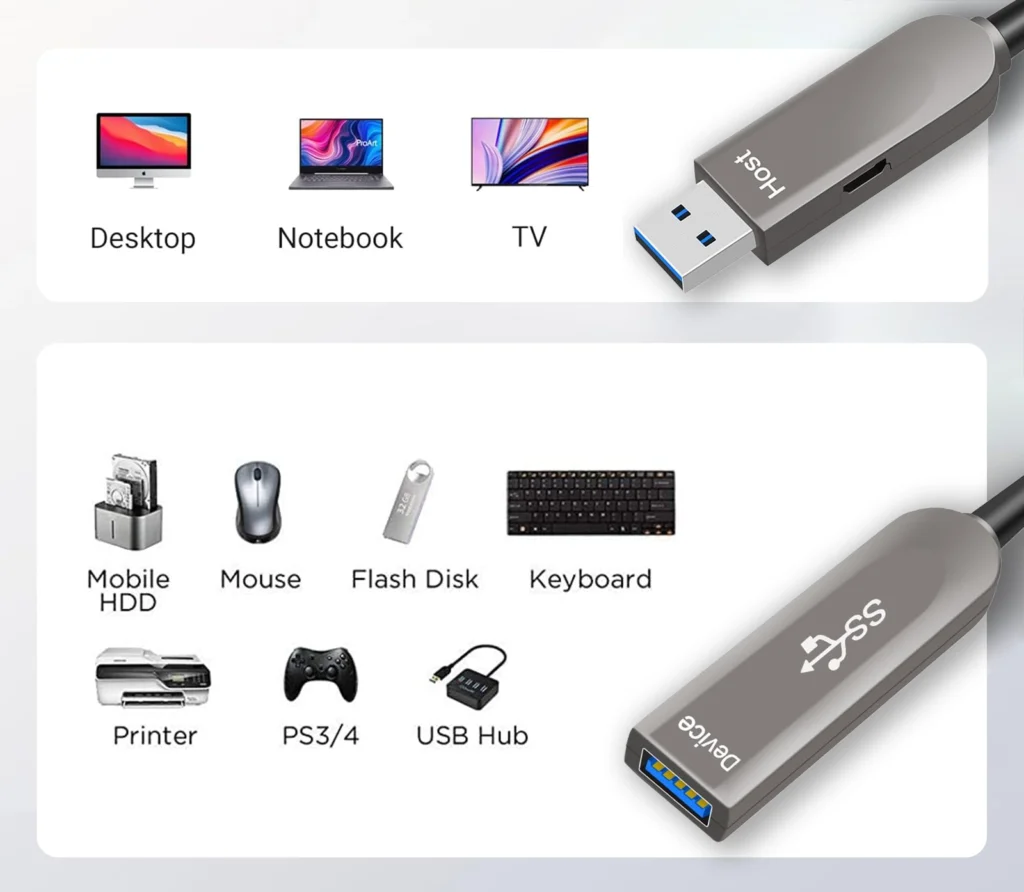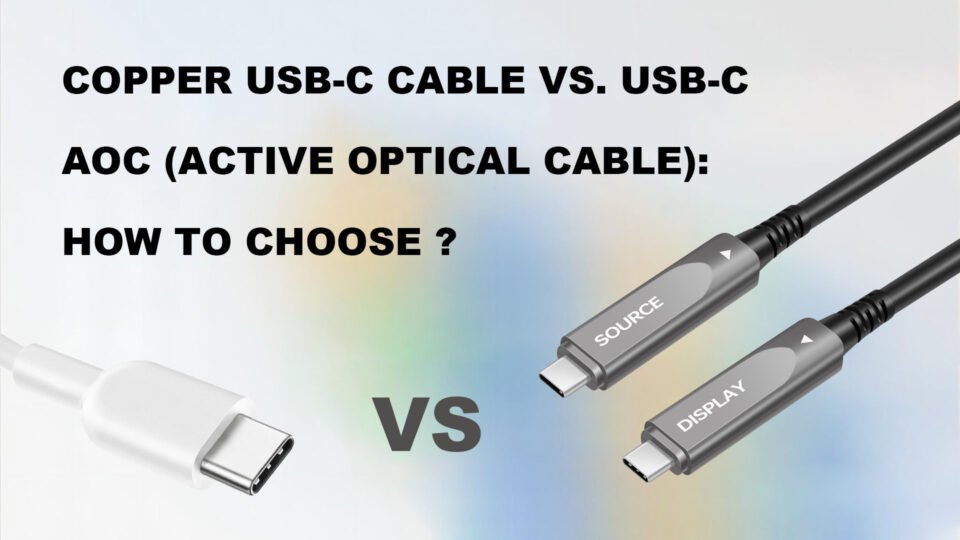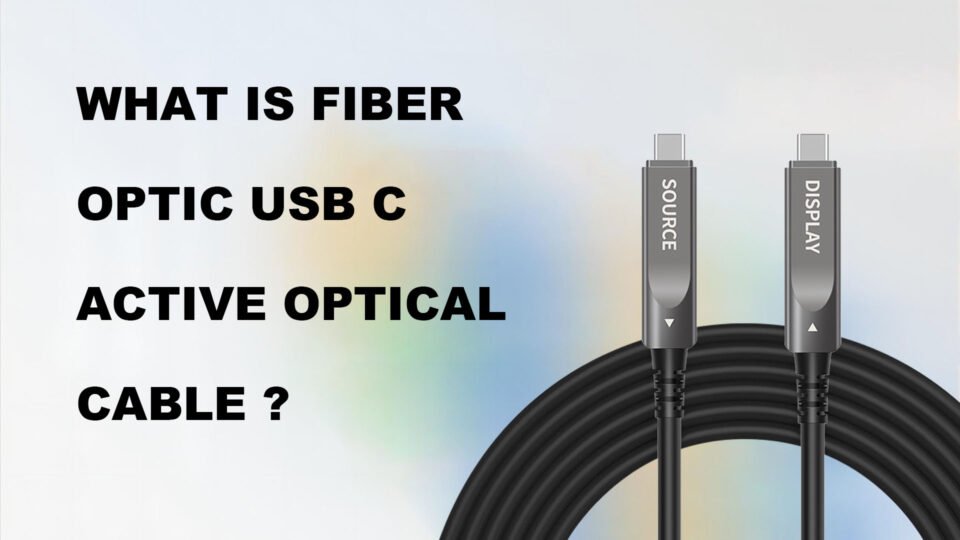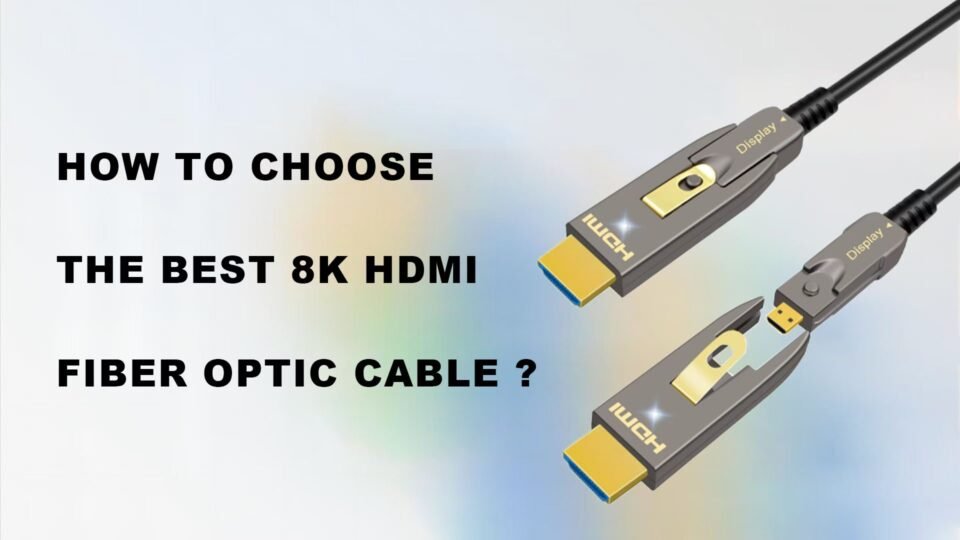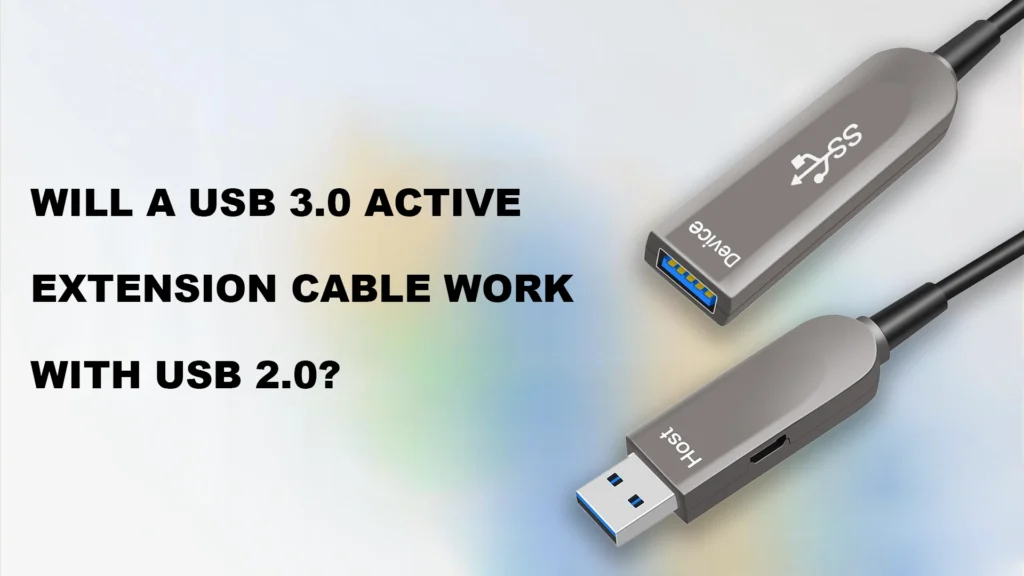
As the technology landscape evolves rapidly, the functionality and diversity of USB standards have become critical in ensuring seamless connectivity solutions. A common concern among consumers and technology professionals is whether USB 3.0 active extension cables are compatible with USB 2.0 devices. This is a sure thing – these cables are indeed compatible with the older USB 2.0 standard. In addition, USB 3.0 extension cables significantly enhance long-distance data transmission capabilities unlike traditional copper cables by utilizing optical technology.
This compatibility is not accidental, but an important feature in USB 3.0 design, known as backward compatibility. Thanks to advanced signal protocols and bus topologies, USB 3.0 extension cables, especially USB 3.0 active extension cables with optical fiber technology, are able to connect seamlessly with USB 2.0 devices, allowing users to integrate new technologies without replacing existing infrastructure. This capability ensures that consumers can enjoy the enhanced features and performance of USB 3.0 while maintaining compatibility with existing USB 2.0 devices and achieving lossless and stable connections over long distances via optical fiber.
The broader significance of this compatibility is that it not only allows seamless transitions and continued use of peripherals across a variety of technological evolutions, but also reduces electronic waste and maximizes the life of devices. The long-distance connectivity capabilities achieved through active optical fiber also support a more complex and fragmented device ecosystem. In an era where connectivity is critical, the backward compatibility and advanced long-distance connectivity of active optical USB cables support a diverse device ecosystem and continue to drive innovation without leaving existing technologies behind.
Technical Overview of USB3.0 vs. USB2.0 and Active Optical Fiber
The development of USB (Universal Serial Bus) technology reflects a continuous innovative effort to improve data transfer and connection efficiency. When comparing USB 2.0 and USB 3.0, significant progress is particularly evident in speed and functionality. In particular, USB3.0 active optical fiber provides a significant physical distance advantage, extending the data transfer distance without being affected by signal attenuation, electromagnetic radio frequency interference, ambient temperature, etc.
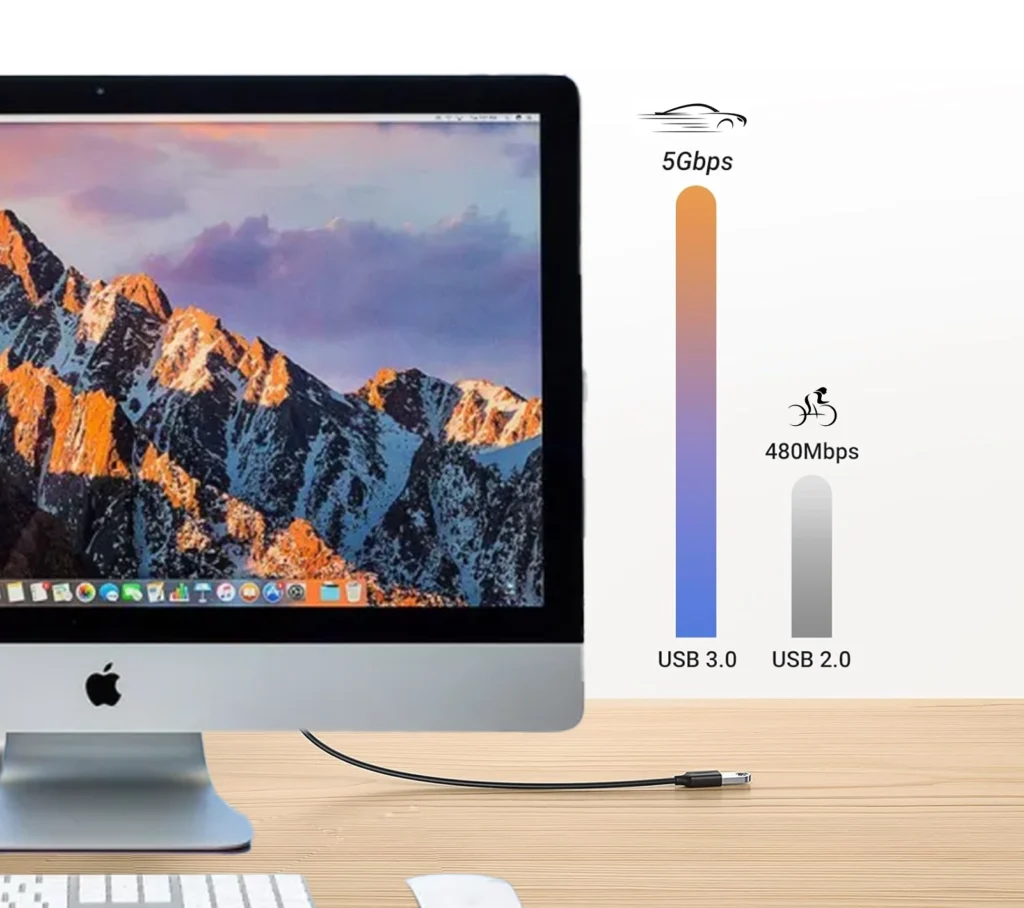
USB 2.0 was introduced in 2000, laying the foundation for modern connections, with a maximum data transfer rate of 480 Mbps. Due to its reliability and sufficient speed for applications at the time, this standard was widely adopted in various devices. However, with the increasing complexity of digital devices, the need for faster data transfer rates and longer cable coverage gradually emerged.
To this end, USB 3.0 was introduced in 2008, marking an important leap forward, with its “super speed” function providing data transfer rates of up to 5 Gbps. By adopting active optical fiber, users also gain longer connection distances and enhanced resistance to electromagnetic interference. This tenfold increase in speed and distance enables faster data transfers, ideal for large file transfers, supports high-definition video streaming, and improves overall performance for data-intensive tasks. In addition, USB 3.0 introduces improved power management features that improve energy efficiency and enhance power delivery to connected devices.
Despite these significant improvements brought by USB 3.0, backward compatibility with USB 2.0 remains a key feature that is essential for user convenience and ecosystem integration. With active optical support, users can not only connect a variety of devices without a large-scale transformation of existing infrastructure, but also use longer distance support when needed, maintaining continued interoperability in a diverse technology environment. The strategic inclusion of backward compatibility not only helps smooth the transition to new technologies, but also ensures that investments in older devices and peripherals continue to maintain value and operability.
All of this further emphasizes the importance of USB-compatible technology as the backbone of modern connectivity solutions, while taking advantage of the long-distance advantages of active optical fiber, respecting the durability and investment associated with legacy systems without compromising next-generation technology innovation.
Understanding Backward Compatibility
Backward compatibility is a key feature of USB 3.0, ensuring it can work seamlessly with a wide range of USB 2.0 devices. This capability is not just a bonus, but a cornerstone of the USB 3.0 design philosophy, enabling a wide range of devices to interoperate without users having to replace existing peripherals. At the same time, backward compatibility can be achieved at longer transmission distances through the integration of fiber optic technology.
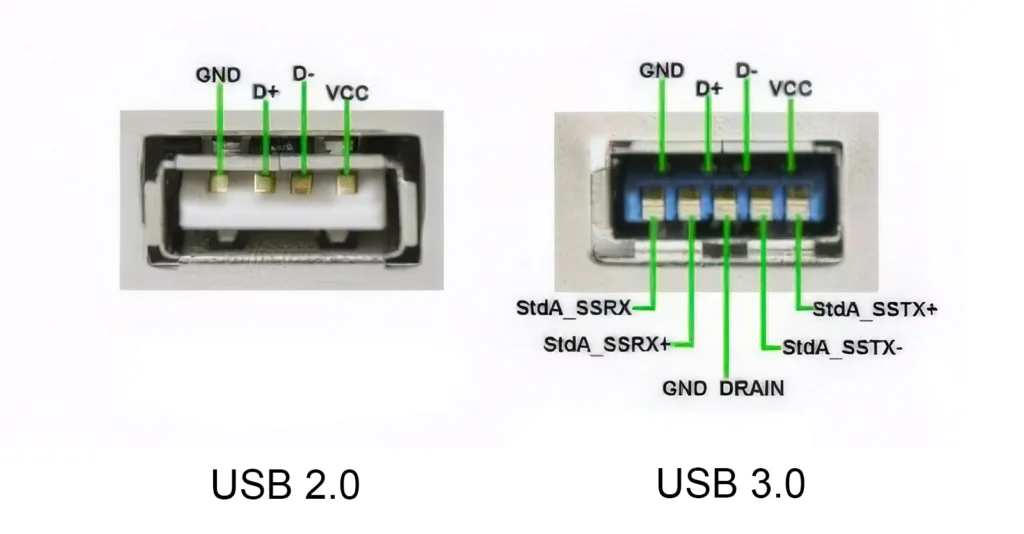
1. Technical Design Features
USB 3.0 has many technological advances over USB 2.0, but maintains compatibility through carefully designed signal protocols and bus topologies. The architecture of USB 3.0 uses a dual-bus configuration that can transmit traditional USB 2.0 signals and its own SuperSpeed signals at the same time. This dual-channel setup ensures that when a USB 3.0 active extension cable or port is connected to a USB 2.0 device, it automatically switches to USB 2.0 signals, ensuring seamless operation between devices. This backward compatibility is critical to maintaining functional communication between new and old hardware. With fiber optics, the signal can maintain integrity over long distances without being interfered by EMI.
Signaling Protocol: USB 3.0 retains the differential signaling technology that was also used in USB 2.0, which helps reduce electromagnetic interference and maintain data integrity in the connection. The retention and enhancement of this protocol ensures that USB 3.0 can effectively negotiate and communicate with USB 2.0 devices.
Bus Topology: The bus topology of USB 3.0 is designed to support high-speed and low-speed operations. By parallelizing the original bus with additional dedicated lines, USB 3.0 is able to meet high-bandwidth requirements while maintaining compatibility with existing infrastructure. Active optical fiber further extends this capability, providing more possibilities for large deployments or high-density connection scenarios by extending cable length.
2. Strategic Importance
The introduction of backward compatibility in USB 3.0 is a strategic decision to ensure the widest possible market coverage and user convenience. This design choice enables manufacturers and consumers to take advantage of new technologies without having to abandon their investments in older devices. For manufacturers, it allows the production of cables or devices that support multiple generations of products at the same time, which not only simplifies the product line, but also enhances market coverage and product attractiveness through active optical fiber extension.
Benefits of compatibility
USB 3.0’s backward compatibility with USB 2.0, such as achieved through active optical fiber, provides significant advantages that go beyond mere technical convenience and impact consumers, manufacturers, and the broader technology ecosystem.
1. Benefits for consumers for consumers, compatibility between USB 3.0 and USB 2.0 ensures a smooth transition when upgrading devices. This means that users can incorporate newer USB 3.0 technology into existing devices without replacing functioning USB 2.0 peripherals. They can take advantage of the long-distance characteristics of active optical fiber to combine the high performance of USB 3.0 with longer-distance transmission. Seamless integration not only extends the life of current devices, but also maximizes the value of technology investments.
2. Benefits for manufacturers from a manufacturer’s perspective, backward compatibility simplifies product development and expands market acceptance. Companies can produce products that meet the needs of new and old technologies while adding long-distance application capabilities, thereby simplifying the production process and reducing the need for multiple product variants. Integrating active optical fiber in products may provide manufacturers with additional sales points, especially in industries that require long-distance and stable data transmission.
3. Wider impact on a larger scale, USB 3.0’s compatibility with USB 2.0 contributes to environmental sustainability and reduces electronic waste. Users are not forced to discard old devices, thus reducing the need for new materials. Combined with USB 3.0 active optical fiber technology, users can flexibly arrange their devices, while reducing the environmental burden and not posing obstacles to the introduction of future technologies.
USB3.0 compatibility enables USB3.0 active optical cables to support more devices, such as: Desktop, Notebook, TV and Mobile, HDD Mouse, Flash Disk, Keyboard, Printer, PS3/4, USB Hub, etc.
Impact of using USB 3.0 active fiber extension cable to connect USB 2.0 devices
While the backward compatibility of USB 3.0 active fiber extension cable provides considerable flexibility and convenience, there are still some significant impacts and limitations to consider. Understanding these factors is critical for users when choosing a connection option.
1. Data transfer limitations One of the most direct impacts when using a USB 3.0 cable with a USB 2.0 device is the limitation of data transfer speed. Although USB 3.0 active extension cable theoretically supports speeds of up to 5 Gbps, and can maintain high speeds over long distances using active optical fiber, its maximum data transfer rate is limited by the capabilities of USB 2.0, which is only 480 Mbps. This means that in this configuration, the high-speed advantages of USB 3.0 cannot be fully realized. This reflects a fundamental feature of backward compatibility – while it ensures interoperability between devices, it does not enhance the inherent capabilities of the old standard.
2. Power delivery considerations Power delivery is another key factor when considering the combination of a USB 3.0 extension cable with a USB 2.0 device. USB 3.0 has improved power management capabilities and is able to provide more power to connected devices, which is beneficial for charging and energy efficiency. However, when these cables are used with USB 2.0 devices, power delivery will regress to the limitations of USB 2.0. This can result in suboptimal charging times and reduced efficiency for devices that rely on enhanced power capabilities. Combined with the characteristics of active optical fiber, there is an opportunity to improve the range of power distribution in certain applications.
3. Overall Performance In summary, while USB 3.0 active optical cables can seamlessly connect with USB 2.0 devices due to their backward compatibility, they cannot exceed the performance limitations inherent in the older technology. However, by adding optical fiber support, they can expand the geographical range of installations, especially in applications where physical distance is a key issue.
Conclusion
The compatibility between USB 3.0 active extension cables and USB 2.0 devices reflects the promise of USB technology for universality and adaptability. In this discussion, we explored backward compatibility and how it enables seamless integration between different generations of USB technology through optical fiber technology, providing consumers and manufacturers with an efficient way to connect without the need for an immediate and comprehensive upgrade of infrastructure.
The practical benefits of this compatibility are obvious: it provides users with the flexibility to incorporate new technologies into existing systems, protecting equipment investments and maximizing utility. In particular, the flexibility of USB 3.0 active optical cables allows for more flexible physical wiring, as well as long-distance lossless transmission of optical fiber, enabling systems to interact with more and farther devices. However, if you want to have a better user experience, users can consider adopting the USB3.0 standard when possible to take full advantage of the advanced features of USB3.0 active optical cables.
When choosing USB cables and peripherals, the key is to match product selection with current and future needs. USB 3.0 products, including active optical fibers, provide the flexibility and ability to support a variety of devices, thereby ensuring the future adaptability of technology investments.
In summary, the strategic embrace of backward compatibility and the benefits of active optical in the USB standard reflects the balance between innovation and legacy support, ensuring that technological advances enhance rather than destroy the connection environment. Finally, as technology continues to advance, users and manufacturers should always pay attention to the important role of compatibility in maintaining a dynamic and efficient technology ecosystem.
FAQ
A1: Can I use a USB 3.0 extension cable with USB 2.0?
Q1: Yes, you can use a USB 3.0 extension cable with USB 2.0 devices due to the backward compatibility feature of the USB 3.0 standard. This allows the USB 3.0 active extension cables to connect seamlessly with USB 2.0 ports. However, it’s important to note that the data transfer rate will be limited to the maximum capability of USB 2.0, which is 480 Mbps, despite the cable’s potential to support up to 5 Gbps with USB 3.0 devices.
A2: Can you use a USB 3.0 stick in a USB 2.0 port?
Q2: Yes, USB 3.0 sticks can be used in USB 2.0 ports. USB 3.0 is designed specifically to allow use with older USB 2.0 ports, meaning the device will work, although data transfer speeds will be reduced to USB 2.0’s extreme speeds. But this ensures that users can integrate other newer USB 3.0 technologies without immediately upgrading all existing hardware.
A3: Is there a difference between USB 2.0 and 3.0 extension cables?
Q3: Yes, there are significant differences between USB 2.0 and USB 3.0 extension cables. USB3.0 cables offer faster data transfer rates (up to 5 Gbps compared to 480 Mbps for USB2.0) and include more advanced technologies such as USB3.0 which provides improved power delivery, making it capable of delivering more demanding Power devices and improved energy efficiency. It can also be combined with active fiber optic technology for longer, interference-free signal transmission. These features provide superior performance for high-bandwidth applications where USB 2.0 cables have limited speed and range.
A4: Can I replace USB 2.0 with 3.0?
Q4: If you require faster data transfer speeds and enhanced functionality, USB 3.0 can be used instead of USB 2.0 and is recommended. Although USB 3.0 cables or devices can be used with USB 2.0 interfaces, it is beneficial to upgrade the cables and ports to take full advantage of the functions of USB 3.0. For example, USB3.0 adds new power management functions to support standby, sleep and Tentative mode further improving power efficiency; at the same time, full-duplex communication is introduced. Cable distances can also be extended through active optics technology. This transition helps ensure your setup is compatible with newer devices while still maintaining functionality with older peripherals, future-proofing your setup.
Optical USB Cables
-
 Fiber Optic USB C Cable 15ft(5m)-8K Video-10Gbps Data-100W Power Delivery
Fiber Optic USB C Cable 15ft(5m)-8K Video-10Gbps Data-100W Power Delivery -
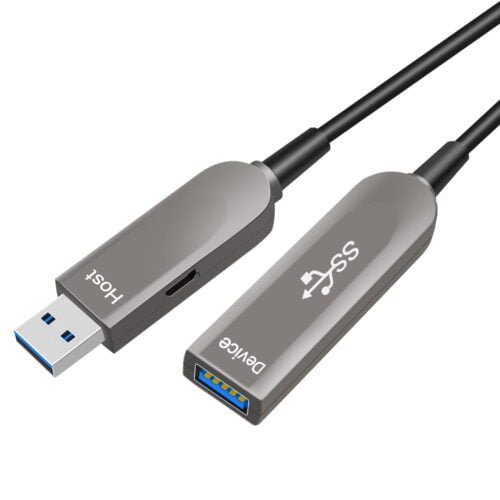 Fiber Optic USB 3.1 AOC-Active Optical Cable,Gen-2,10Gbps,AM to AF,100m
Fiber Optic USB 3.1 AOC-Active Optical Cable,Gen-2,10Gbps,AM to AF,100m -
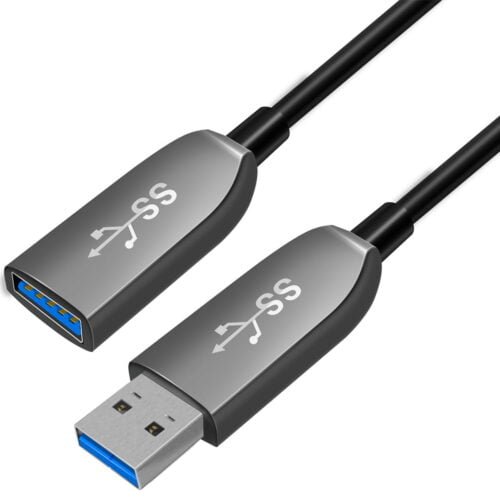 Active Fiber Optical USB 3.0 Extension Cable,AM to AF,5Gbps,100m
Active Fiber Optical USB 3.0 Extension Cable,AM to AF,5Gbps,100m -
 15m USB3.2 Gen2 type-C Fiber Active Optical Cable 8K Video 10G Data PD60W
15m USB3.2 Gen2 type-C Fiber Active Optical Cable 8K Video 10G Data PD60W -
 10Gbps USB 3.2 GEN2 Type-C AOC-Active Optical Cable
10Gbps USB 3.2 GEN2 Type-C AOC-Active Optical Cable -
 15m USB3.2 AM to USB-C Fiber Active Optical Cable
15m USB3.2 AM to USB-C Fiber Active Optical Cable -
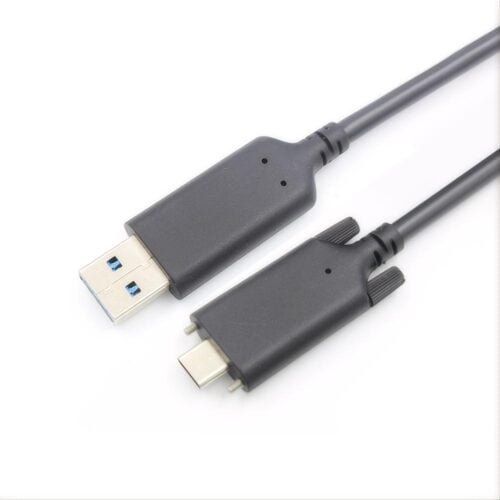 USB3.2 Fiber Optic AM to type-C AOC-Active Optical Cable
USB3.2 Fiber Optic AM to type-C AOC-Active Optical Cable -
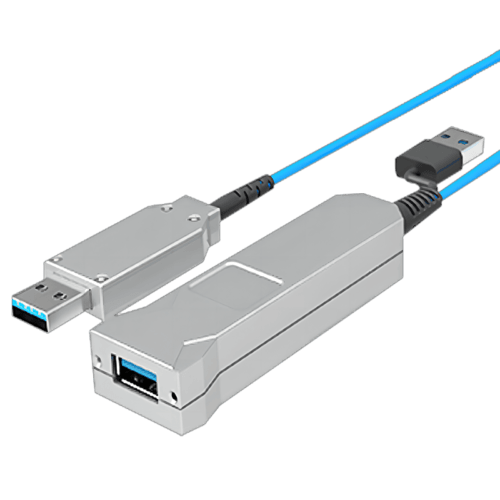 USB3.1 Fiber Active Optical Extension Cable-AM to AF-100m
USB3.1 Fiber Active Optical Extension Cable-AM to AF-100m -
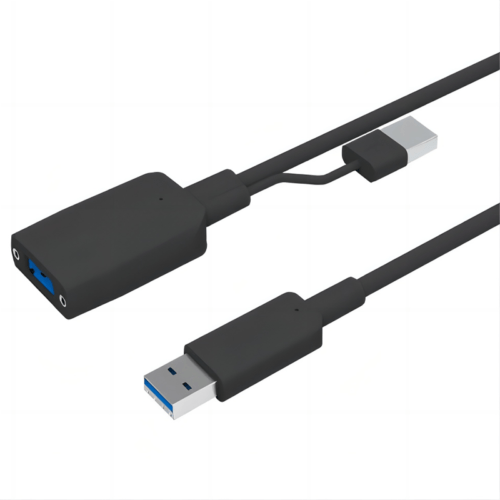 USB3.2 Active Optical Extension Cable-type A Male to Female Y Cable Power Supply
USB3.2 Active Optical Extension Cable-type A Male to Female Y Cable Power Supply

